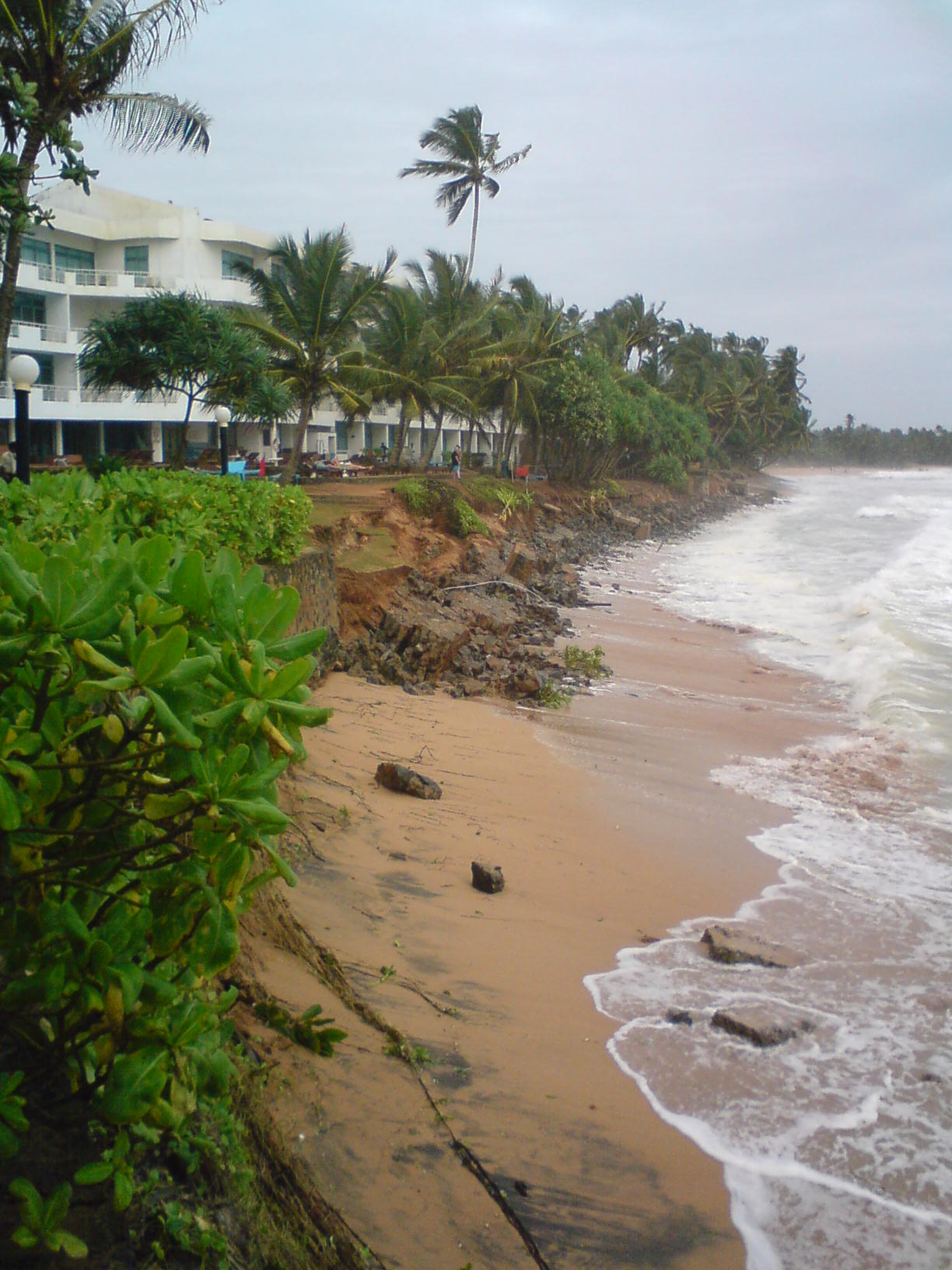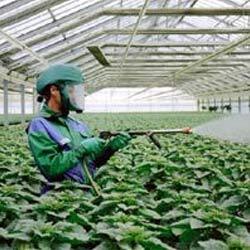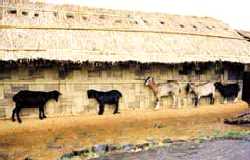Lax easing: Change system, share benefits
In the absence of stringent laws and strong institutions, mining remains one of the most unregulated of activities in the country despite its huge social and environmental fallouts. It may be
In the absence of stringent laws and strong institutions, mining remains one of the most unregulated of activities in the country despite its huge social and environmental fallouts. It may be

Bhutan redefines development

Forest commission fails to innovate
Although the State Government has declared some villages as "model village' from time to time its apathy towards them has raised a question mark about the Government's sincerity in making these villages as model villages. Jhaskal village under Satrasal GP in Dhubri district located in the far-western Part of the Indo-Bangla International border is a glaring example of underdevelopment. After 21 years of its declaration as a model village, Jhaskal area is still to see the light of development in communication, healthcare, education power supply, agriculture etc. Situated under Agomani Development block in Golakgani LAC, Jhaskal was formally declared as a model village and its foundation stone was laid on April -11, 1987 by the then Chief Minister of Asom Prafulla Kumar Mahanta. Though the people of the village are largely dependent on agriculture, they are deprived of the modern methods of agriculture including superior quality seeds, manure etc. Even the peasants do not get the right price for their produced goods. The education scenario in the village is also grim. The two ME schools established 22 years ago through public donations are yet to be provincialized by the Government. Great Jhaskal area has four Government LP Schools. These schools lack basic infrastructure like desks and benches. In comparison to students enrolment, there is also shortage of teachers. Three schools are still running with a single teacher each. In the name of healthcare, there is a sub-centre at Jhaskal but its lacks adequate nurse and medicines. As a result, for simple disease, the patients have to rush to Satrasal or Agomani for treatment. Road communication in the area is also very deplorable. In the monsoons due to lack of repair work, the village roads become muddy and waterlogged. Though there was a PWD road through the villages in the past, it was declared as a border road in 1985 at the time of fencing of barbed wire across the Indo-Bangla border resulting in a lot of troubles to the border people. Now, the villagers have to use the road as per the time and permission of the BSF. If not, they have to face action from them. Another grey area of this "model village' is power. The transformer remain out of order in majority of the days in the year making the villagers the worst sufferers. The village is also deprived of potable water. Though a Public health and Engineering scheme was launched at jhaskal Part -1, the people are deprived of its service. After six months of service, the scheme is lying abandoned for 19 to 20 years. It is worth mentioning here that several hundred bighas of lands in the area fall into India's side of the
SINOSTEEL, the $16-billion state-owned Chinese steel major, will start work on its proposed unit in West Bengal in April. The new unit due to come up in the port town of Haldia will be Sinosteel's first manufacturing presence in India. Sinosteel, which plans an investment of Rs 200 crore, will manufacture cold forged steel rolls used in cold rolling mills. "Construction work on our plant in West Bengal will start from April. We have got possession of 30 acres at Haldia on which the plant will come up. We have already placed orders for equipment which will be shipped from China,' Sinosteel India MD Hangseng Wang said. He is in the city to attend a steel seminar. The meet will focus on bringing steel and allied sectors of China and India closer. The Haldia unit will have a capacity of 5,000 tonne and will meet one-third of the requirements in the Indian steel industry. The investment in West Bengal is a part of the $2-billion package being readied by Sinosteel for stepping up its manufacturing presence in India. As part of this project, Sinosteel had signed an MoU last year with the Jharkhand government for a 2-million tonne (mt) integrated steel plant. "All necessary approvals from external affairs, finance and steel ministry have come through. We would like to start work as soon as we get the land,' Mr Wang said. Sinosteel, which is into mining, design and manufacturing of steel plant equipment, has been involved in construction of almost all major plants in China. The proposed project is likely to come up in Silli-Chandil area near Ranchi. Sinosteel is looking at 300 mt of iron ore reserves for which the company will apply for a mining lease. "However, we will not wait for getting a mining lease before we start our operations. Instead, we will stick to our schedule. If necessary, we would source iron ore from private mines in and around the area,' Mr Wang added. China, which produced 489 mt of steel in 2007, is the largest steel producer in the world. "We can do a lot for the fast growing Indian steel industry,' Mr Wang added.
The All-India Democratic Women's Association (AIDWA) has hailed Union Finance Minister P. Chidambaram's initiative of taking cognisance of the huge agrarian crisis and taking steps to bring relief to farmers, who include a large number of women also. In a statement, Subhashini Ali, president, and Sudha Sundararaman, general secretary of the AIDWA, said the measures for debt waiver and debt relief did not, however, address the critical issue of loans taken from private moneylenders. Secondly, many regions in the grip of crisis such as Vidharbha and Rayalaseema were dry land, where individual holdings were usually more than two hectares, eligible for relief. The crucial question of reduction in the rate of interest to 4 per cent on agricultural loans was ignored. Finally, it was not just debt relief but rejuvenation of the entire agricultural sector through a massive increase in public spending that would alleviate this crisis, the statement said. After four years, the United Progressive Alliance (UPA) government heeded to the voice of lakhs of anganwadi employees but their demand for an increase in wages was met only partially. Secondly, the budget did not reflect the allocations for universalisation of the Integrated Child Development Services and make 14 lakh anganwadi centres functional by the end of 2008 as per a Supreme Court directive, especially at a time when child malnourishment and infant mortality continued to remain high. Given the huge increase in the prices of essential commodities, especially wheat, rice, pulses, it was expected that the budget would suggest measures to curb inflation, which was exacerbated by the recent increase in fuel prices. Food security The statement said the UPA gave an undertaking in the Common Minimum Programme (CMP) to strengthen the public distribution system and move towards universalising it. However, the meagre increase in the food subsidy allocation from Rs. 31,456 crore last year to Rs. 32,667 crore was hardly adequate to ensure basic food security for more than 70 per cent of the population that lived below poverty line. "This cannot meet the needs of food-deficit States such as Kerala, as well as States that were adversely affected by the recent cuts in allocations of foodgrains,' it said. The allocations for health and education remained far below the targets set in the CMP and the decision to shift the burden of the Sarva Shiksha Abhiyan to the States showed the lack of commitment of the Centre to implement the constitutional guarantee of right to education. "As far as gender budgeting is concerned, we welcome the fact that more Ministries had provided a gender budget analysis of their expenditure,' the statement added.
Holding down inflation and interest rates, energising the production function, pushing investments, saving livelihoods, and raising incomes and consumption became the principal objectives of the Budget. The waiver of farm loans is a means to the accomplishment of these goals. G. Ramachandran First things ought to come first. There is an exaggerated view that the waiver of farm loans is senseless and indefensible. The waiver has been criticised on the grounds that it would vitiate the credit culture and exacerbate moral hazard in banking. The critics have no such views when commercial and industrial loans remain unpaid or are waived and written off. The waiver of farm loans is a wholly sensible and defensible decision. The waiver at its worst estimate is expected to cost the exchequer a big sum of Rs 60,000 crore. But it will most likely trigger an increase in gross domestic product (GDP) of over Rs 3,72,000 crore over the next three years. The exchequer will earn at least Rs 44,000 crore if the tax-to-GDP ratio is 12 per cent. The nominal net loss could at worst be Rs 16,000 crore. But there may be no loss at all. The loss could turn into a sizeable profit. There are three reasons for this optimism. First, the loss to the exchequer would be lower when the other robust stimuli to growth act upon the economy. Second, the waiver would break the logjam in the fallow farmlands. It will put crops back on cultivable lands that have remained fallow. A spurt in output will kill inflation. Third, lower inflation will keep interest rates low. Nonperforming assets of banks will rebound smartly. Therefore, law-abiding taxpayers and conscientious borrowers that repay loans have nothing to fear. Smartly managerial The Finance Minister has acquired a reputation for smart and conscientious fiscal management since 2006. He has managed India's fat fixed costs of running government pragmatically. He has outrun the beastly costs by taking a managerial view of tax revenues. He has stimulated tax inflows by lowering the unit excise duty rates. He has raised the threshold of the service tax. The raising of the personal tax threshold level and the slabs expands incomes that can be allocated to consumption. It expands the size of the indirect tax market as a result. Yet, it ensures that the good times of ordinary people will continue. The cut in excise duties applicable to many consumption goods and consumer durables deserves special attention. Compliant and conscientious The boost to consumption may appear scandalous. But the Finance Minister has stayed steadfastly on course to meet the requirements of the Fiscal Responsibility and Budget Management Act (FRBMA). Ernst & Young, a global accounting confirm, has aptly commented that India has
<p>How does the UNFCCC select its various locations for its annual climate change meets? What I am hinting at is, why Cancun? Why, for that matter, Copenhagen, Poznan or Bali? I have been told that cities vie for the honour, just like a sporting event such as the Olympics or the Asiad, and pay for it. <br /> <br />
<p>The post-2012 emissions reduction commitments for Annex 1 countries under the Kyoto Protocol (KP) are presently going nowhere. Japan had fired the first salvo when in the opening plenary, it categorically stated its opposition to the second commitment period of KP. Now, countries like Australia, Canada, and some European nations have joined the chorus to disband KP.</p>
Less than a kilometer from Asia's largest Solar Termal plant, west of Bikaner, Rajasthan, lives the farmer Sabhu Khan. His hamlet is still unreached by the grid. Instead of the grid connection, he decided

<p><span style="font-size:14px;"><strong>Coastal Erosion</strong></span></p> <p><img alt="" src="http://www.indiaenvironmentportal.org.in/files/country/srilanka/coastal_erosion_hl.jpg" style="width: 530px; height: 300px; border-width: 2px; border-style: solid;" /></p> <p>Sri Lanka’s experience with coastal erosion dates back to 1920. Today coastal erosion is an acute problem, disrupting fishing navigation" recreation and many other coast-based activities.</p>

<p><strong><span style="font-size:14px;">Agro-Chemical</span></strong></p> <p><img alt="Agro-chemical" src="http://www.indiaenvironmentportal.org.in/files/country/srilanka/agrochemical_hl.jpg" style="border-width: 2px; border-style: solid;" /></p> <p>The Government of Sri Lanka has introduced a number of policies and programs to increase paddy production since independence. The fertilizer subsidy program is one of the longest-lasting, most expensive, and most politically sensitive policies implemented to promote rice cultivation in Sri Lanka. It was initiated in 1962 (that is, at the onset of the Green Revolution) with the main objective of encouraging farmers to switch from traditional rice varieties to high-yielding varieties (HYVs) that are highly responsive to chemical fertilizers. Since then, however, the provision of the subsidy has become customary, and successive governments have been under tremendous pressure to continue the subsidy despite budgetary constraints.</p>
<div style="width:100%;"> Kolkata Municipal Corporation has an area of 185 km2 and the Kolkata Metropolitan Area is spread over 1,750 km2 with 15 million people. Pollution levels in Kolkata are high

The potato, native to South America, invaded England in 1588, the year Elizabeth I's devil may care sea dogs vanquished the Spanish Armada. It has since spread throughout the world, leaving its most edible mark on various cuisines.

Tax reforms, which would penalise the unlimited use of nature, are fast becoming an imperative part of preparing national budgets, prodded by the realisation that ecological costs have to be accounted for, here and now. But will Manmohan Singh pay heed to

A non govemmental organisation attempting to help women in Haryana's and Rewari district is hampered by caste factors and male chauvinism.
DOWN TO EARTH has been consistently arguing that people"s self-management and control are the best ways to deal with the critical problems facing India, namely, declining productivity and the steady

While people worry about patenting of upmarket plant products like neem because of transnational interest, India's unique biodiversity of domesticated animals is disappearing because of lack of attention. <font class='UCASE'>Indira Khurana</font> of the
Rameshwari has been working as a scavenger in the pilgrim town of Ajmer in Rajasthan for the last 15 years. She abhors her work, yet she does it as it is her only source of livelihood.
In 1972, Dennis Meadows had co authored the well known report, Limits to Growth, along with Donella Meadows and Jorgen Randers. Recently, the same team came out with a sequel, Beyond the Limits. In this interview, Meadows talks about the new insights that